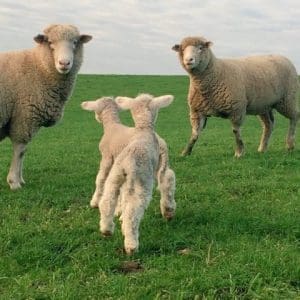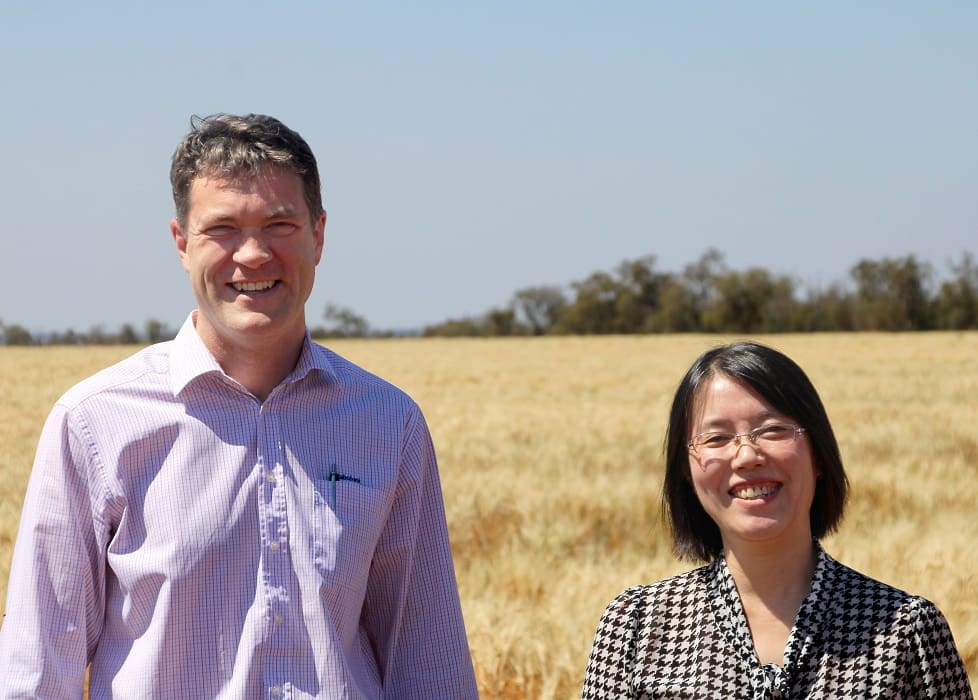 AUSTRALIA’S ewe flock is continuing to grow – up another 717,000 ewes since October last year — but producers should not be worried about the nation producing too many lambs for domestic and world sheep meat markets.
AUSTRALIA’S ewe flock is continuing to grow – up another 717,000 ewes since October last year — but producers should not be worried about the nation producing too many lambs for domestic and world sheep meat markets.
The increase in ewe numbers is implicit in sheep producers reporting a total breeding flock of 42.5 million ewes in the latest Meat & Livestock Australia and the Australian Wool Innovation Wool and Sheepmeat Survey Report for June 2022.
The extra ewe numbers mean at least several hundred thousand more lambs will be on the market, depending on marking rates and ewe lamb and Merino wether retention rates, but recent analyses suggest there will be sufficient demand to handle any increase in Australia’s sheep meat production.
Thomas Elder Markets analsyst Matt Dalgleish said lamb exports to the United States are trending above five-year trends across the whole, but when US consumption of sheep meat compared to other meats is considered, as indicated by The Organisation for Economic Co-Operation & Development’s report on meat consumption levels and forecasts to 2029, there is a lot of spare demand capacity.

TEM analyst Matt Dalgleish.
In his report today Meat me in the middle of the meat, Mr Dalgleish said sheep meat is the clear laggard in the meat types with many nations still relatively unfamiliar with the product, such as Japan and the USA.
“However, this provides much opportunity for growth. In the last two years Australian lamb export volumes to the USA have been trending well above average (as reported in early August) so the longer term fundamentals for the sheep meat sector and export opportunities for the Aussie sheep meat producer are pretty robust.”
Mr Dalgleish said there is sheep meat component in the coming India free trade deal, expected increased sheep meat access and volumes via the United Kingdom Free Trade agreement and “ we haven’t even started to talk about China yet.”
He said China’s demand for Australian lamb has come off a little bit, but mutton is still “raging ahead.”
He said the OECD is forecasting a 13.3pc increase in meat consumption into India, an 11.2pc lift in Indonesia and China has forecast meat consumption growth levels of 13.1pc.
Mr Dalgleish said sheep producers shouldn’t be worried about the impact of Australia’s ewe flock increase on lamb markets in the future. Many of Australia’s processors are also still operating under capacity due to labour issues.
Continuing demand from China despite slowing economy and lockdowns

Rabobank animal protein analysts Angus Gidley-Baird and Chenjun Pan.
Rabobank also said today that Australia’s beef and sheep meat sectors can expect continuing demand from China despite its slowing economy and continued lockdowns impacting how the country consumes animal proteins.
In a newly-released podcast, Is the Chinese meat market still firing?, Rabobank’s Hong Kong-based senior animal protein analyst Chenjun Pan said China’s lockdown policies have affected the population’s protein consumption habits, with the major short-term change being where people are consuming food.
“In the past, banquets played an important role in rural areas and smaller cities.
“Because of the lockdowns, the banquets have disappeared, and the number of business events and dinners have also declined,” she said.
However, Ms Pan said, Chinese consumers are continuing to consume animal protein at home and via food delivery – with food delivery services having grown steadily in China through the pandemic.
“The emergence of food delivery services is having a heavy impact on the traditional food service sector in China,” she said in the podcast.
The trend of “convenience food” was also growing in the Chinese market with booming dmeand for ready-to-eat, ready-to-cook and ready-to-heat type convenience foods.
Ms Pan said if China’s COVID policies remain unchanged — dissauding people from travelling, gathering in large groups or eating outside their home — the Chinese food service sector will continue to be negatively impacted. But protein consumption is expected to increase in quarter four though, Ms Pan said, which is the Chinese “high-season” for the animal protein market – “when consumers typically eat more meat during the colder months” – with prices tracking higher with this increased demand.
Merino ewes keep the upper hand in ewe flock
Merino ewes accounted for 72pc of the total breeding ewe flock in the latest MLA/AWI survey.
Merino breeding ewes were further divided into Merino ewes for pure bred Merino production and Merino ewes for crossbred production and ‘other’ Merinos, accounting for 51pc, 19pc, and 2pc of the merino flock, respectively.
The survey showed Australian producers reported 22 million lambs on hand, with 55pc of these pure Merinos or 12 million head, followed by first cross at 19pc and pure meat lambs at 17pc of the national lamb flock.
MLA said the breeding ewe population was largest in the Great Southern region of Western Australia at 5.6 million, central west of New South Wales at 5m and south-east NSW at 4.8m. The number of lambs on hand in the survey was greatest in central west NSW at 3.1 million. This was followed by southern Western Australia at around 2.7m head.
87pc of producers want to maintain or increase ewe numbers
MLA senior market information analyst Ripley Atkinson said the desire to retain breeding ewe populations stems from stellar growing seasons, particularly in the eastern states.
“Compared to the last survey released in February of this year, 27pc of producers surveyed said that they would like to increase their ewe flock, while 60pc indicated they would like to retain current numbers.
“The majority of this growth is coming from eastern Victoria, northern NSW and southern Queensland where there have been very wet conditions,” he said.
“This demonstrates plenty of confidence in the market with room for growth moving into Spring.”
About 12pc of producers surveyed said they intend to decrease their ewe numbers.
7.3 million lambs marked in four months to June 2022
A total of 7.3 million lambs were marked in the four months. Merinos accounted for 47pc of these, followed by first cross breeds at 28pc and pure meat at 18pc.
The survey showed that 7.6 million ewes were joined to produce the lambs that were marked in the past four months. The national Merino marking rate was 93pc, compated to 101pc for non-merino breeds.
A total number of 7.6 million lambs are expected to be sold in the next four months, about 34pc of the total number of lambs on hand. Their breed breakdown is Merino 36pc, first cross breeds 29pc and pure meat 23pc.
NSW and Victoria to lead coming lamb sales
The survey indicated NSW, with 48pc, and Victoria, with 18pc, are expected to lead lamb sales over the next four months, totalling about 5m lambs. This is followed by Western Australia with 13pc of lamb sales and South Australia with 12pc.
“With the Bureau of Meteorology forecasting strong seasonal conditions for the eastern states as the new season lambs hit the market, the signs are looking positive for the Australian sheepmeat industry,” Mr Atkinson said.
The survey is run three times a year, collecting sheep meat industry livestock numbers and lamb production expectations. Production and producer intentions are regularly monitored to generate better forward-looking information that allow producers to make the most efficient decisions, with the results of these surveys forming the basis of MLA’s Industry Projections.
Please find the latest MLA & AWI Wool and Sheepmeat Survey Report here.

HAVE YOUR SAY